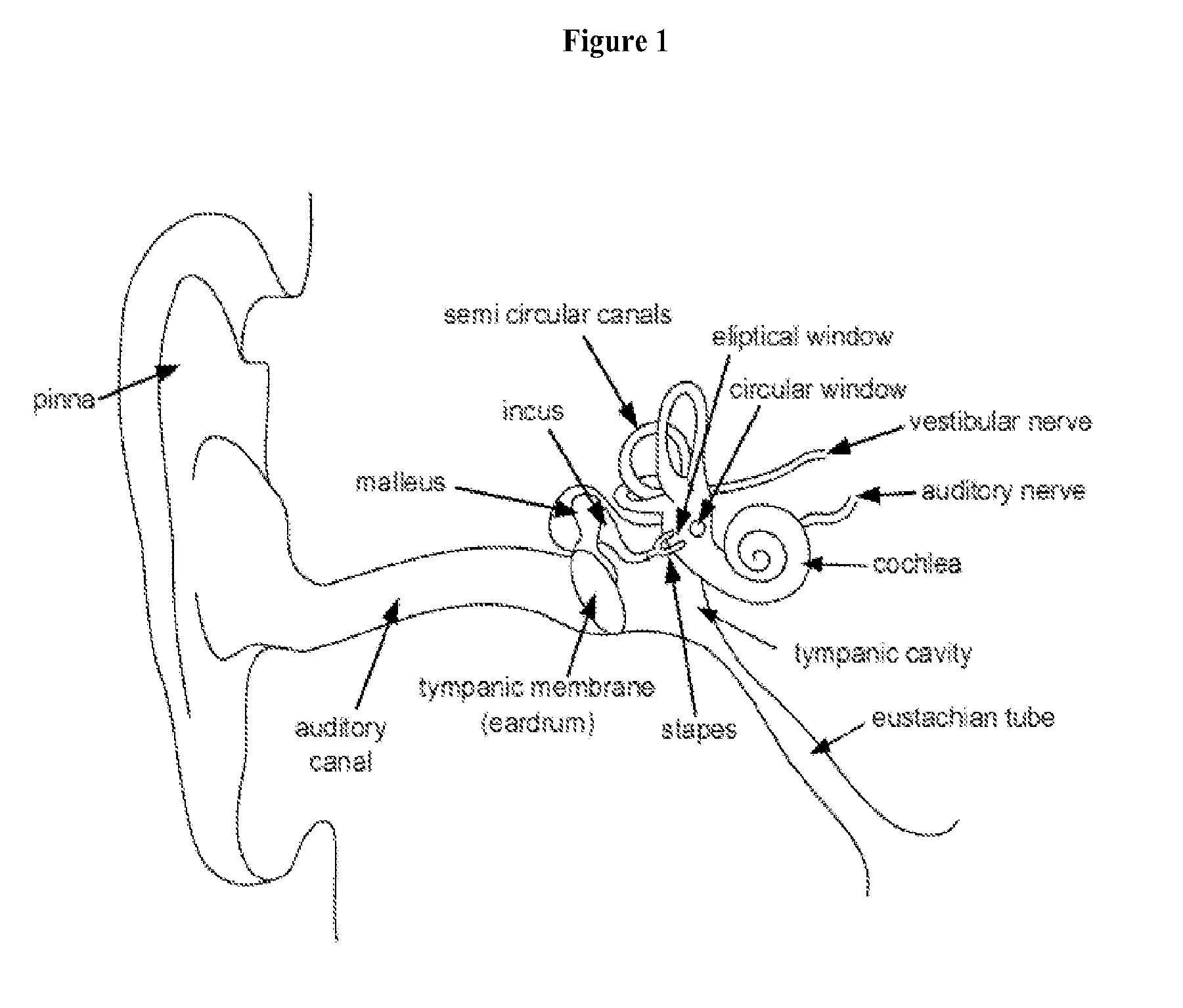Treatment and/or Prevention of Inner Ear Conditions by Modulation of a Metabotropic Glutamate Receptor
- Summary
- Abstract
- Description
- Claims
- Application Information
AI Technical Summary
Benefits of technology
Problems solved by technology
Method used
Image
Examples
example 1
Preparation of a Gel 4-[1-(2-fluoropyridin-3-yl)-5-methyl-1H-1,2,3-triazol-4-yl]-N-isopropyl-N-methyl-3,6-dihydropyridine-1(2H)-carboxamide (FTIDC) Formulation
[0110]
Quantity (mg / g ofIngredientformulation)FTIDC16chitosan8Glycerophosphate disodium32water336
[0111]A 5 ml solution of acetic acid is titrated to a pH of about 4.0. The chitosan is added to achieve a pH of about 5.5. The FTIDC is then dissolved in the chitosan solution. This solution is sterilized by filtration. A 5 ml aqueous solution of glycerophosphate disodium is also prepared and sterilized. The two solutions are mixed and within 2 h at 37° C., the desired gel is formed.
example 2
Application of a Gel 4-[1-(2-fluoropyridin-3-yl)-5-methyl-1H-1,2,3-triazol-4-yl]-N-isopropyl-N-methyl-3,6-dihydropyridine-1(2H)-carboxamide (FTIDC) Formulation onto the Round Window Membrane
[0112]A formulation according to Example 1 is prepared and loaded into 5 ml siliconized glass syringes attached to a 26-27-gauge luer lock disposable needle. The gel 4-[1-(2-fluoropyridin-3-yl)-5-methyl-1H-1,2,3-triazol-4-yl]-N-isopropyl-N-methyl-3,6-dihydropyridine-1(2H)-carboxamide formulation is topically applied to the tympanic membrane, and a small incision made to allow visualization into the middle ear cavity. The needle tip is guided into place over the round window membrane, and the gel FTIDC formulation applied directly onto the round-window membrane.
example 3
Evaluation of FTIDC in an Early Onset Age-Related Hearing Impairment DBA-Mouse Model
[0113]DBA mice are administered an FTIDC formulation of Example 1 directly onto the round window membrane, beginning 2, 4 or 8 weeks after birth. The hearing threshold for the auditory brainstem response threshold (ABR) to click stimuli for each ear of each animal is initially measured and on a weekly basis during and after the experimental procedure. The animals are placed in a single-walled acoustic booth (Industrial Acoustics Co, Bronx, N.Y., USA) on a heating pad. Subdermal electrodes (Astro-Med, Inc. Grass Instrument Division, West Warwick, R.I., USA) were inserted at the vertex (active electrode), the mastoid (reference), and the hind leg (ground). Click stimuli (0.1 millisecond) are computer generated and delivered to a Beyer DT 48, 200 Ohm speaker fitted with an ear speculum for placement in the external auditory meatus. The recorded ABR is amplified and digitized by a battery-operated preamp...
PUM
 Login to View More
Login to View More Abstract
Description
Claims
Application Information
 Login to View More
Login to View More - R&D
- Intellectual Property
- Life Sciences
- Materials
- Tech Scout
- Unparalleled Data Quality
- Higher Quality Content
- 60% Fewer Hallucinations
Browse by: Latest US Patents, China's latest patents, Technical Efficacy Thesaurus, Application Domain, Technology Topic, Popular Technical Reports.
© 2025 PatSnap. All rights reserved.Legal|Privacy policy|Modern Slavery Act Transparency Statement|Sitemap|About US| Contact US: help@patsnap.com

